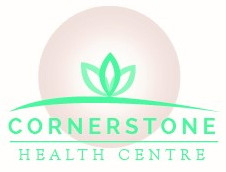Georgetown Back Pain Patients Tips for Waiting on Relief: Walking, Breathing, Walking
Liminality. A time of waiting. A time of transition. The holidays have many of us transitioning and waiting to holiday gatherings and a new year. Back pain has some of us Georgetown back pain and neck pain sufferers waiting and transitioning on a state of pain relief as well. The waiting is sometimes the toughest part. Waiting for the big holiday and waiting for the relief of back pain or neck pain are filled with anticipation. Exercising, breathing, and walking are positive ways to deal with the liminality. Dr. Butwell is right beside our Georgetown chiropractic patients as they wait.
HOW TO HELP YOURSELF THROUGH BACK PAIN’S LIMINALITY
Back pain specialists will often prescribe ice/heat/exercise for home care. New reports are showing that deep breathing exercises (especially the pursed-lips version which sufferers reported as more calming and pleasant with a more sense of control) (1), diaphragmatic deep breathing (6 breaths per minute for 10 minutes twice a day for 4 weeks effectively generated positive outcomes to enhance autonomic function by decreasing sympathetic activity) (2), and long-distance walking (which created time to enter a ‘liminal space’ to ponder on one’s struggles, relish some calmness, and embrace current feelings) (3) are useful. Dr. Butwell encourages any of these ideas to boost the healing, pain-relieving course of action with Georgetown chiropractic services.
LIMINALITY IN BACK PAIN AND SCIATICA CARE
A fascinating outcome from a study performed in the UK - SCOPiC (SCiatica Outcomes in Primary Care) – described the thoughtful state of ‘liminality’ many sciatica or sciatic leg pain sufferers use to manage their pain and its path to recovery. Researchers interviewed sciatic low back pain sufferers. Sciatica is accompanied by its own unique group of issues in terms of its persistence and severity of symptoms. Researchers explained the concept of “biographical suspension” as it applies to sciatica patients who seem to put life on hold while expecting an ultimate return to their prior, pain-free selves, holding onto hope while also handling concern. This is a form of ‘liminality’, the time between pre- and post-pain, held up by a belief that sciatica is a passing problem that is fixable, not a long-term disease. Even those who had sciatic leg pain for some time kept this belief. (4) Dr. Butwell is often awestruck by the persistence of back pain and leg pain sufferers to find something that works for them. They oftentimes consult a variety of healthcare providers and try many different approaches as they are confident that there is help. Georgetown back pain and Georgetown leg pain patients often find that relief when they finally arrive at Dr. Butwell as we take the time to clearly explain the spinal problem, its treatment, its expected outcome, and its treatment plan including the frequency of visits and the expected timeframe for relief. The 50% Rule directs both: 50% subjective relief (how you feel) along with 50% objective relief (via specific test findings) decrease the treatment plan frequency by 50% (ex: daily visits turn to every other day). Dr. Butwell constantly monitors the back and leg pain sufferer’s progress toward pain relief with the Cox® Technic System of Spinal Pain Management.
CONTACT Dr. Butwell
Listen to this PODCAST with Dr. Robert Patterson on The Back Doctors Podcast with Dr. Michael Johnson as he discusses how what the patient expects influences their pain relief via The Cox® Technic System of Spinal Pain Management.
Set up your next Georgetown chiropractic appointment today. Waiting while transitioning from pain to pain-relief is a time of hope mixed with a little worry. Dr. Butwell knows this and has the experience in walking this path with our low back pain and sciatica patients. Liminality need not be endured alone!

